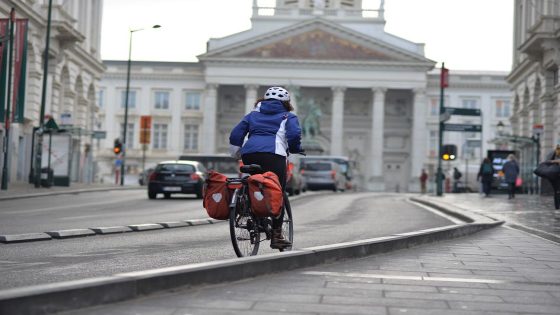Brussels is witnessing a surge in cycling, with women making up 40% of the city’s cyclists as of 2024. This trend mirrors the previous year, indicating a steady increase in female participation. Are more women embracing cycling as their primary mode of transport? With an impressive 96% biking three to four times weekly, it seems so!
- Women comprise 40% of Brussels cyclists.
- Majority cycle three to four times weekly.
- Bicycle accidents among cyclists are decreasing.
- 90% of cyclists have higher education degrees.
- Most cyclists wear helmets and secure bikes.
Brussels Cycling Trends: A Growing Community and Improved Safety
What makes Brussels a cycling hub? The latest data reveals that cycling is not only popular but also increasingly safe for riders. With 26% of cyclists reporting accidents over the past two years—down from 31% in 2023—it’s clear that safety measures are having an impact.
The Profile of Cyclists: Who’s Riding in Brussels?
The demographic landscape of Brussels cyclists is changing. An impressive 90% hold higher education degrees, showcasing a well-educated biking community. Additionally, the consistent percentage of female cyclists highlights ongoing efforts to promote inclusivity within this mode of transport.
Key Statistics on Cycling Safety and Participation
The numbers speak volumes about the state of cycling in Brussels:
- 40% of cyclists are women.
- 96% bike at least three times per week.
- 71% wear helmets while riding.
- A significant decrease (9%) in injured cyclists reported this year compared to last year.
The Impact of Education on Cycling Habits
Cycling isn’t just about getting from point A to B; it’s also influenced by education levels. With most cyclists being highly educated, it raises questions about how knowledge impacts choices regarding eco-friendly transportation methods like biking. Could this be a model for other cities aiming to boost their cyclist demographics?
Sustainable Transport: Lessons for Urban Areas
The success seen in Brussels can serve as an inspiration for cities worldwide looking to enhance their public transport systems sustainably. By encouraging more people to cycle through improved infrastructure and safety measures, urban planners can create healthier environments while reducing traffic congestion and pollution levels.































